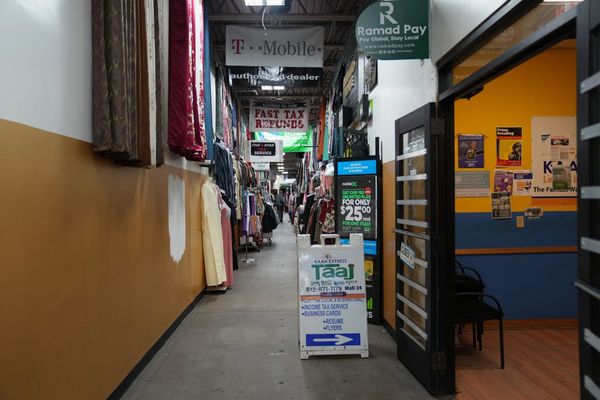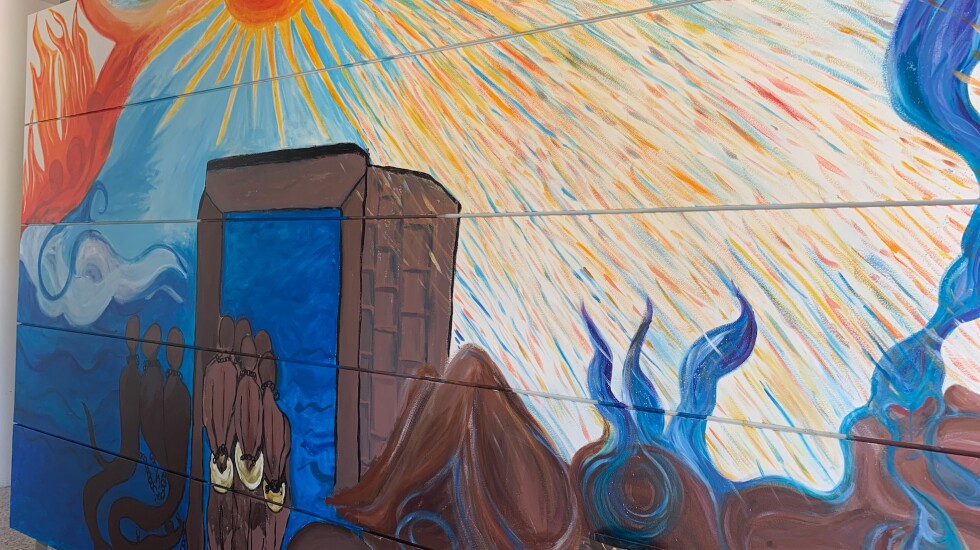
The images were inspired by the “Door of No Return” in Ghana, where Africans were brutally corralled and forced onto ships and into slavery in the Americas.
Immanuel Karunakaran, the artist, says he wanted to capture “the sadness and the sorrow and the pain of that experience” and explore the complexity of “God within our suffering.”
His artwork takes up a little more than one side of a four-sided mural created last summer by four artists who studied at the school and are now ministers.
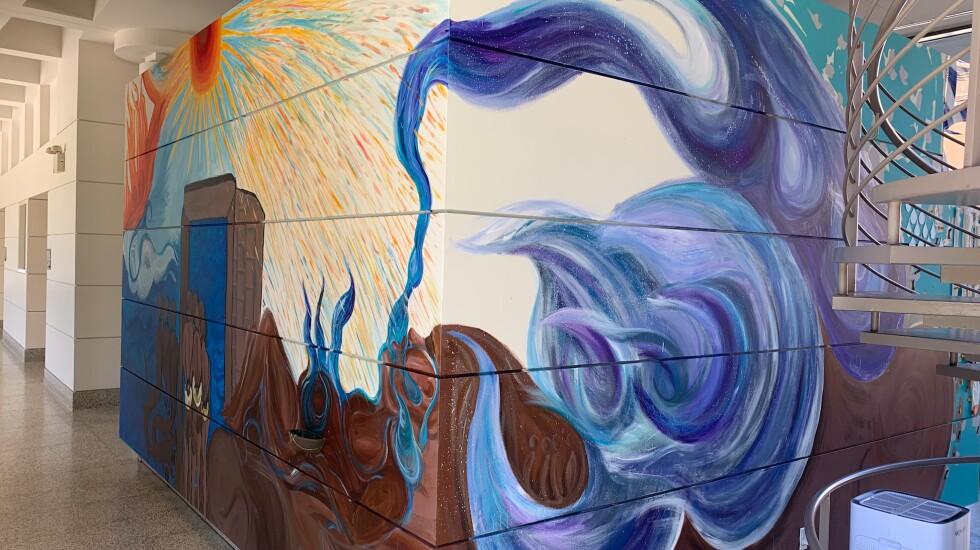
The title of their collaboration, which is visible through the windows from outside the building at 5460 S. University Ave., is “Troubled Waters: Exploring the Movement from Mourning to Joy, from Comfort to Discomfort and from Lament to Liberation.”
Karunakaran, 39, a theologian and Lutheran pastor who lives in Hyde Park, says he feels a kinship with Black Americans, being from India and the Dalit caste that’s long faced oppression there.
He says he also meant the work as a statement on complacency in Christianity — the sense that many have that suffering is something to be endured, even welcomed, with freedom and reward expected later in heaven.
“I’m not concerned about the end,” Karunakaran says. “I’m concerned about the here and now. I believe in being liberated here and now.”
The artists were asked to delve “into the spirit of lament” flowing from “all that’s inequitable in the world and really grasp for joy at the same time,” says another of the artists, the Rev. Shawna Bowman, a 45-year-old Presbyterian minister in Jefferson Park.
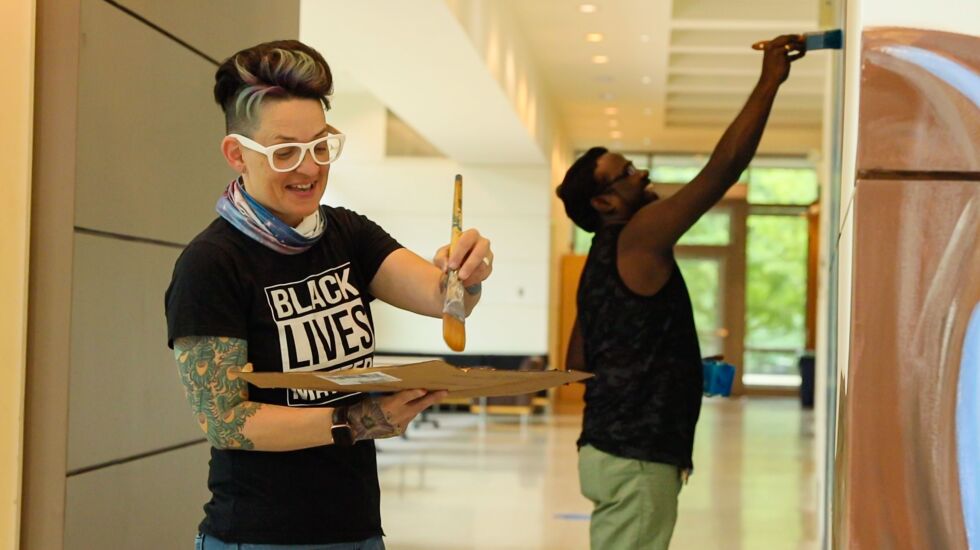
As the artists kicked around ideas with each other and with McCormick students and faculty members, Bowman says that what “really came up for a lot of people” was the bible’s Book of Exodus, which describes the Israelites, led by Moses, living in and ultimately leaving ancient Egypt, where they’d been enslaved.
Bowman painted a “big wave behind the staircase” in the seminary’s lobby, bending the image “across the corner to the figure emerging from the ground.”

The image was intended to symbolize the “destructive power in the world” — whether it’s the Egyptian empire in Exodus or any oppression or marginalization of people today, be it racial minorities, the LGBTQ community or the poor, Bowman says.
At the same time, the artist says, the wave also is meant to reflect the necessity of water, which “works to nourish and is a source of liberation and freedom,” as in Exodus, where the parting of the Red Sea allows the Israelites to escape the pharaoh’s army, with the waters then engulfing the pursuers.
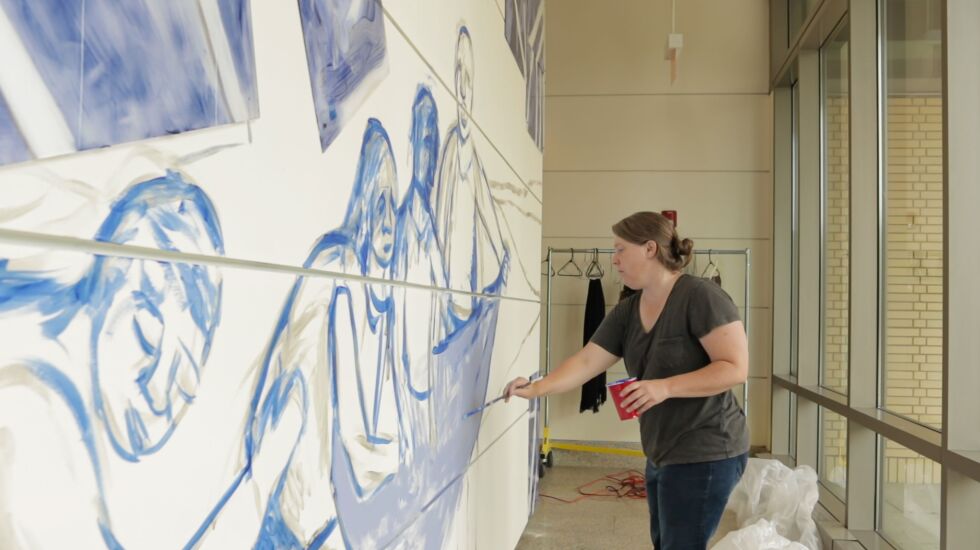
Katherine Chilcote, another artist who worked on the mural, painted “four people passing a tapestry which also looks like a moving body of water.”
“I wanted to show expressions of passing of drape-like brushstrokes of water from one person to the next as a symbol of people passing their burdens while also receiving blessings,” says Chilcote, 42, a United Church of Christ minister in Cleveland.
“The pandemic has forced our society to acknowledge collective grief and suffering,” Chilcote says. “Such mutual experience can create immense kindness and love as well as heightened conflict and hostility. We have seen people isolate themselves during this pandemic and others go far outside their comforts of life and offer a radical hospitality.
“In the push and pull of these two years, there have been extreme reactions to common suffering. We’ve seen the rise of protests and a rise of church existing far outside the steepled buildings. As a group of artists, we discussed how joy can sting, crush, permeate and conquer some of life’s greatest atrocities and sins.
“It is in moments of collective grief that joy becomes a deep permeating love, similar to the viscosity and transparency of water.”
Sergio Centeno, 53, a Lutheran pastor in New York City who also worked on the mural, fell ill during the project and says the painting became a “component of my healing process,” with the images as something “to heal the community.”
His images served to connect the varying aspects of the mural.
McCormick’s Priscilla Rodriquez suggested doing the mural. She says she wanted “public art within the seminary that would be a centering point, that would speak theologically to people as they entered the building.”
The timing — amid the COVID-19 pandemic and a period of profound racial unrest — was purposeful.
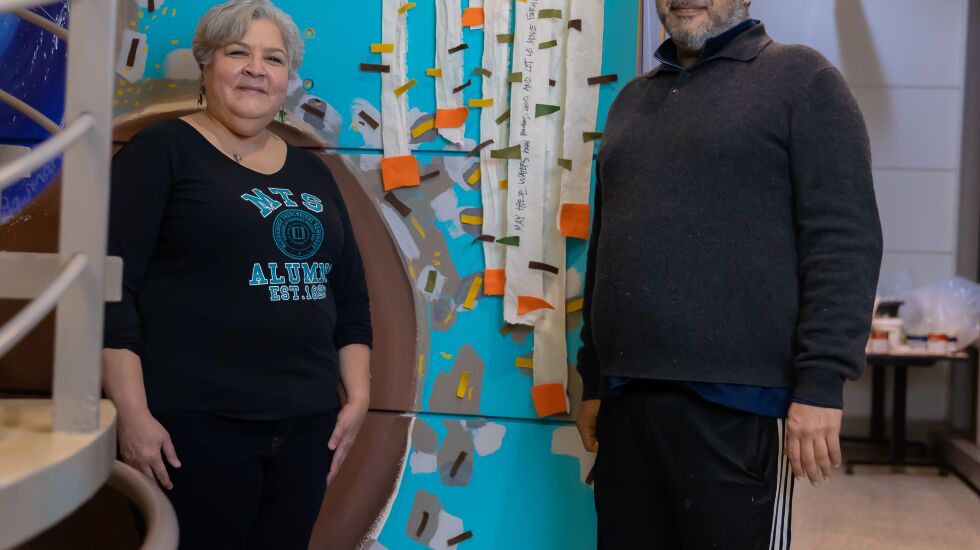
“People are looking for quiet spaces right now because we have gone through a lot of traumas over the past two years,” Rodriquez says. “We all need time to reflect and get in touch with our souls.”
Click on the map below for a selection of Chicago-area murals





